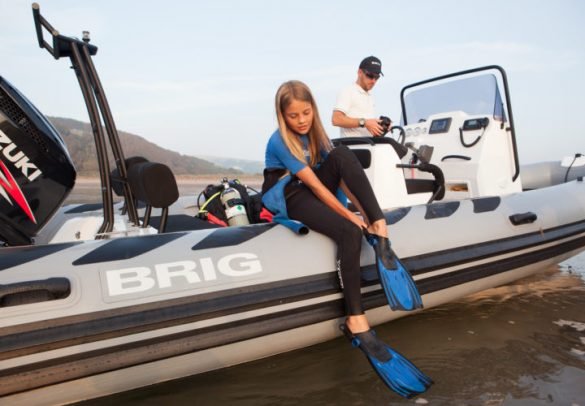You can dive from anything that floats and while some boats are more suitable than others, when it comes to RIBs of any size, they are the perfect vessel. Whether you are in a 4m RIB with just you and your diving buddy or a 20m purpose-built multi-engined dive boat, nothing beats a RIB.
About 18 months ago I was asked by Dive New Zealand magazine to do a series of boat test articles specifically focused on how well a given boat meets the unique demands of a spear-fisher and/or SCUBA Diver. I came up with a “Ten Point Must Have Features” list and used it to judge and compare the suitability for different styles and types of boats for diving. Obviously, the more points ticked on this Ten Point list, the better the boat was judged to be as a good dive vessel.
Also, another list entitled; “Other Features That Would Be Desirable – But Not Necessarily Essential”, was added to further level the playing field between boats of different sizes and types. It doesn’t take a rocket scientist to figure out that diving from the stern platform of a 40m superyacht is going to be a whole lot easier and more pleasurable than diving from a 4m tinny or RIB.
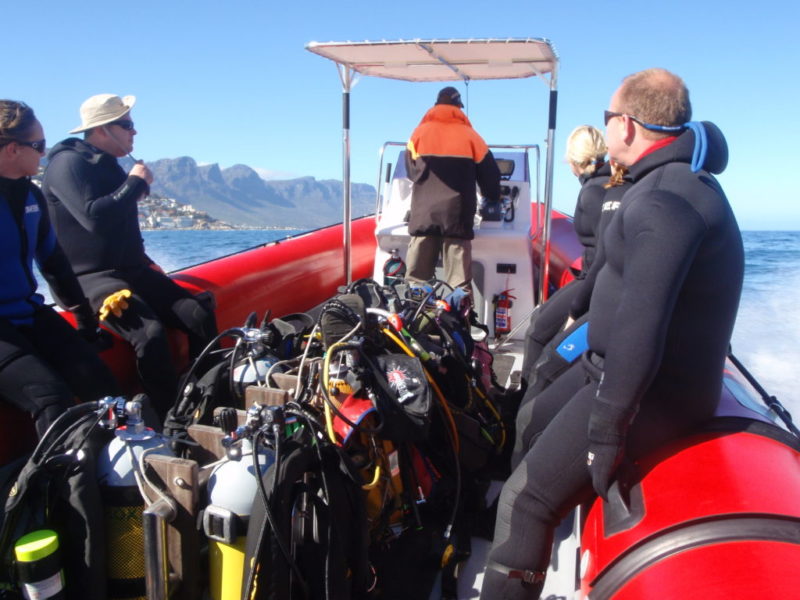
In this article I look specifically at the suitability of RIBS to be used primarily for recreational diving, but also taking into account the requirements of the commercial and military market. With the plethora of RIBS available on the market these days I felt that by dusting off the ‘10 Plus 10 Features Required For Any Good Dive Boat’, these two related lists would be equally applicable to explicitly evaluate RIBS.
Ten ‘must have’ features required for a good dive RIB:
1. Good water entry
2. Easy water exit/ladder/hand holds
3. Tank storage/holders (suitable for various size dive cylinders)
4. Under floor or other gear bag storage areas
5. Spear gun storage/racks
6. Dry storage area(s)
7. Gearing up area to be suitable and practical for a minimum of two divers
8. Self-draining cockpit for easy wash down
9. Fish filleting/seafood preparation/bait board
10. Electronics/instrumentation to include GPS and Depth Sounder.

Desirable but not necessarily essential to qualify as a good dive RIB:
• Toilet (head)
• Freshwater shower (preferably with hot as well as cold water)
• Basic cooktop and galley sink
• Automatic anchor windlass (depending on boat size)
• Weather protection in helm area (canvas or hard top)
• Drink holders
• Practical and ‘user-friendly’ duck board
• Live bait tank
• Walk through transom
• Room for a chilly bin/ice chest/fridge.
Any other qualities, which make the dive experience that much safer and more enjoyable, should also be considered in assessing the overall suitability of a given vessel for your specific diving requirements and budget. However, it goes without saying that any boat must also be equipped with essential navigation equipment, lights, flares, life jackets, First Aid Kit, VHS radio, etc. for safe boating.
Yeah Right
On first glance (depending on your imagination and knowledge) one may think; “All these features on an inflatable? Yeah, right!” Not so. Sure, a small 4m RIB is unlikely to have a toilet, anchor windlass or, for that matter, any of the second tier features; but a large 12.5m RIB could conceivably have all of them as well as every Top Ten feature.
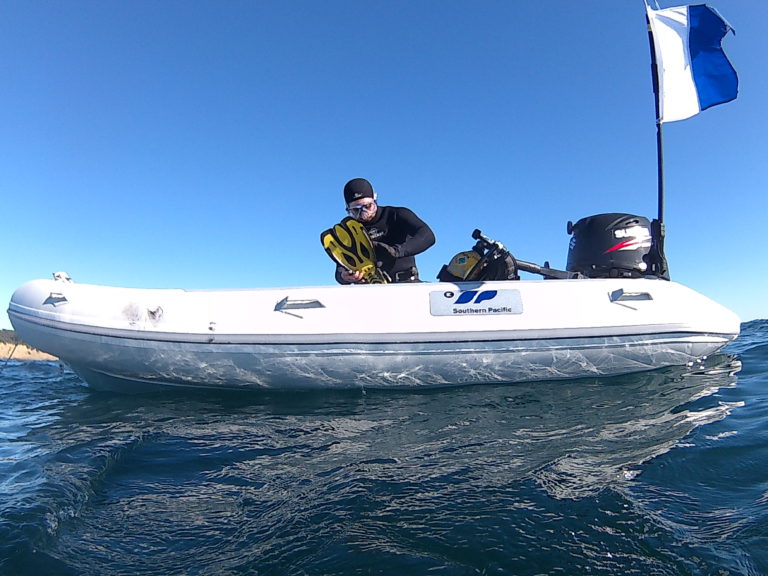
It is hoped that the prospective buyer of a dive RIB will find the above check lists useful when considering their purchase. However, we all know that when it comes to buying a boat, our decisions are as much emotional and subjective as they are intellectual and objective. In my opinion, the latter should win out over the former and, if experience tells me anything, by primarily considering the latter, you will more likely satisfy the former.
Remember too, that all boat manufacturers generally try and satisfy more than one recreational use for whatever boat they build. Thus, unless you are working one-on-one with the builder to come up with a bespoke dive RIB that meets your demanding criteria, the boat will be a compromise.
Speaking of bespoke RIBS, the desire for unique and specialised dive RIBS is never more clearly exemplified than by the characteristics required for commercial and military dive use. Companies such as Naiad and Lancer specialise in such RIBs. By in large these types of RIBS, while sharing many of the essential features that make for a good recreational dive boat, need to be super rugged and highly dependable.
Watch That Knife
Now that you have some guidelines on looking for and purchasing a RIB tailored to your particular needs, here are some hints regarding how to get the most out of your dive RIB.
First and most importantly, it is an “inflatable” boat, despite the fact that it has a rigid hull (aluminium/fibreglass). This means it is subject to being punctured and, although modern inflatable boats are built from extremely tough materials and are often multi-tubed (each tube independent of the others), it does mean that you have to be that much more careful with spear guns, knives or other objects that can pierce an inflated tube. Although the puncturing of a tube may not be catastrophic, it will certainly put you and the vessel at serious risk.
Depending on the size of the RIB from which you are diving, it is highly likely that you will be perched on one of the inflatable tubes while running to and from the dive site. This means you need to hang on and subsequently his means there needs to be conveniently placed hand holds to grab onto when bouncing through the waves.
In a review I did recently on a Southern Pacific’s X-Tender 350 RIB, I was impressed with the fact that Southern Pacific have internally positioned and installed the port and starboard ‘grab ropes’ on the pontoons at exactly the right location at a natural and comfortable level to easily hold on when bouncing across waves. Attention to detail always impresses the hell out of me!
Also in a small RIB, generally the safest way for two divers to enter the water is for one to sit on the port pontoon and the other on the starboard pontoon and on a 3, 2, 1 countdown, both roll off simultaneously, thus ensuring the boat doesn’t tip too dramatically. Of course, if you are in a larger vessel and have the luxury of an easily accessed boarding platform you may wish to enter more gracefully. Then there are also the steps to help you back aboard and an area to drop your weight belt, SCUBA gear, catch bag, etc. when you return from the dive.
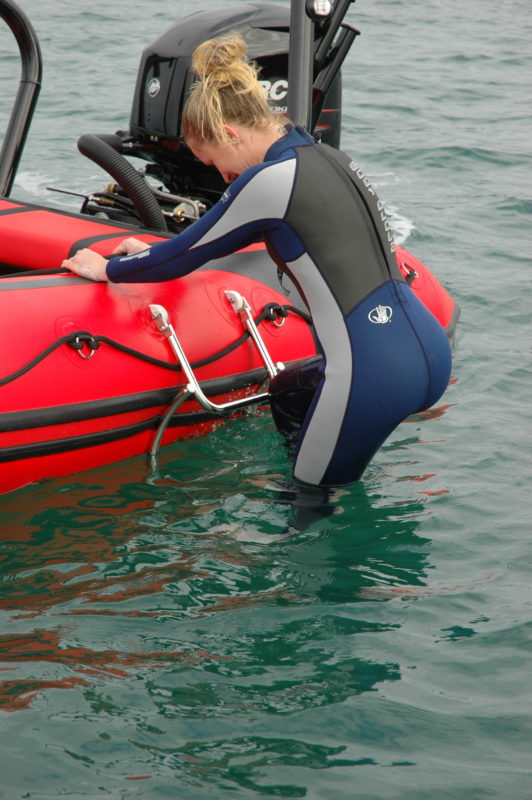
Kiwi company Dixon Stainless make a specialised stainless steel dive ladder, that is designed to wrap and stow around the tube. This a great option, for any RIB and can be custom built to suit your specific needs.
Another thing about RIBs is their stability at rest, something that is especially important when gearing up for the dive or even when you return and are stowing the gear. The inherent stability of the pontoon design is obvious and that’s why they make such great dive boats.
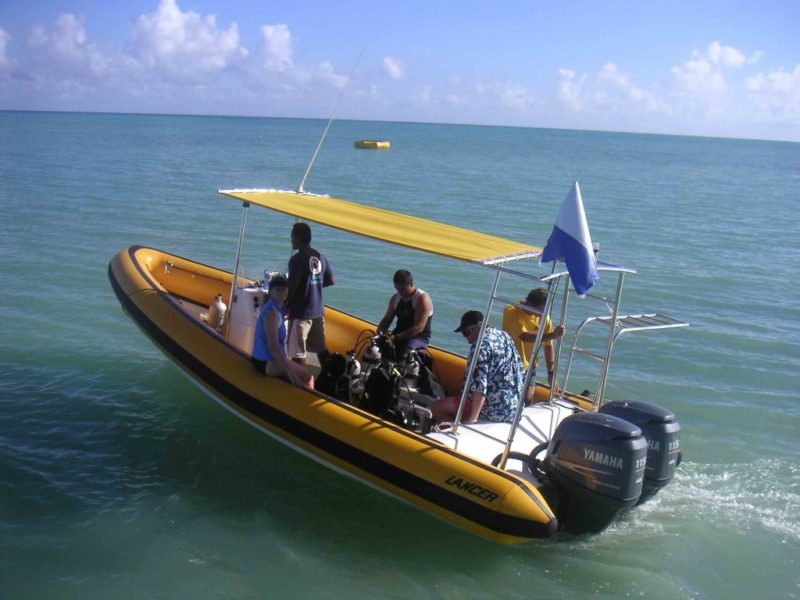
Another great option for a RIB is adding a mounting system such as that offered by Railblaza. Their StarPort surface mounted system means you can mount just about anything anywhere. Things like spear guns, fishing rods, a bait board or the dive flag can be kept firmly in place and out of the way. Floor space in a small RIB is valuable, so it’s great to be able to stow items out of the way when not required.
In summary, if you’ve never dived from an inflatable boat, I would strongly suggest that before purchasing one, you organise to get out diving on a RIB (similar in size to that which you are considering) before making your final purchase decision. In the immortal words of that doyen of the old classic TV series, Sea Hunt – Lloyd Bridges, “Let’s get wet!” – and enjoy your RIB diving.


